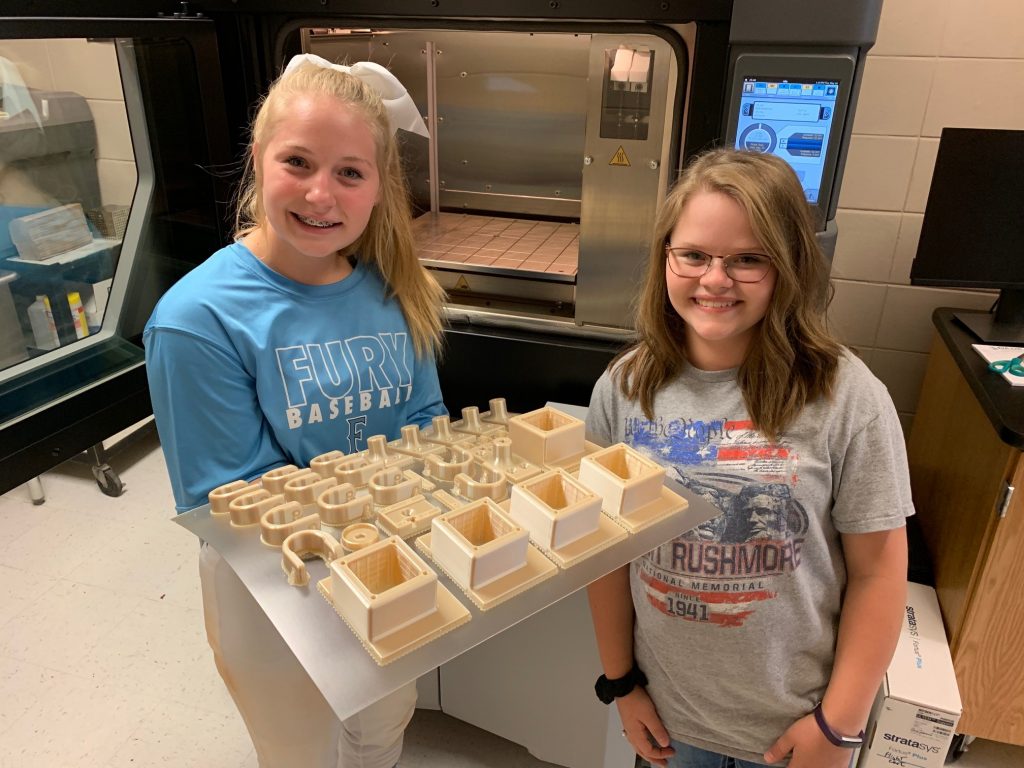Students from Dade County Middle School in Trenton, Georgia have used their school’s FDM 3D printer to produce flight-ready components for the International Space Station.
NASA’s HUNCH (High school students United with NASA to Create Hardware) program seeks to empower STEM students through project-based learning activities, exposing them to modern manufacturing technologies like 3D printing. By designing and manufacturing products valued by NASA, the students are given the opportunity to partake in real deep space missions without needing two years of astronaut training.
Bob Zeek, Co-Founder of HUNCH, states, “The biggest thing in my job is seeing the light bulbs go off when students make the connection of taking a project or a task and knowing where it’s going to fly on the space station, when it’s going to fly, and the self-gratification. All of these factors go hand-in-hand with inspiring the next generation.”

The HUNCH Program
HUNCH was launched back in 2003, and originally only involved two schools in Alabama and one school in Texas. 18 years on, the program has enlisted over 2500 students in 277 participating middle and high schools across the country. To date, students have produced more than 1,500 items for the space station program, 1340 of which have been flown out to the ISS, including a set of end-use spacewalk wires.
Despite its name, the HUNCH program is not limited to hardware manufacturing, as there are six key focus areas for students to contribute to – design and prototyping, software, hardware, sewn flight articles, video and media, and culinary arts. To participate, schools must meet a set of minimal qualifications and have the capability to complete the requirements of the program. To maximize the benefits of the program, HUNCH organizers recommend that the school faculty supervising the students includes teachers with hands-on experience in at least one focus area.
Whitney Young, HUNCH Space Act Agreements manager at NASA’s Marshall Space Flight Center, explains, “The astronauts will put in requests for things that they need on the space station, and essentially it is a wish list that gets cast out to school systems.”

3D printing flight-ready ULTEM parts
Dade County’s ISS components were printed on a newly acquired Stratasys Fortus 450mc using high-performance ULTEM filament, a material characterized by its high strength, flame resistance, and excellent dielectric stability. The school has stated that it will also be printing upcoming parts using carbon fiber-reinforced composites. Dade County is reportedly the only school system taking part in NASA’s HUNCH program to have access to both of these industrial 3D printing capabilities.
Zeek concludes, “This is a one-of-a-kind experience for the students in Dade County to kick-start their careers and interact with a piece of NASA. Empowering and inspiring the next generation of students is the key mission for the NASA HUNCH Program, and will certainly ring true in Trenton this year. You never know, one of those students just might be the next NASA astronaut, engineer, or scientist.”
Giving students the opportunity to experiment with 3D printing before leaving the education system is a great way to foster engagement and encourage STEM adoption. 3D printer manufacturer EOS recently announced its ongoing support for the Texas Rocket Engineering Lab (TREL) at the University of Texas in a student design challenge. Specifically, the company will help TREL print advanced aerospace components for a 28 foot-tall liquid bipropellant rocket as part of the Base 11 Space Challenge.
Elsewhere, 3D printing education provider PrintLab has previously partnered with engineering software developer Autodesk to launch a 3D printing design challenge for school students under the age of 18. Dubbed the Make:able challenge, the competition tasked STEM students with designing and 3D printing a prototype product for individuals with mobility issues in their hands, with the help of Autodesk design software.
Subscribe to the 3D Printing Industry newsletter for the latest news in additive manufacturing. You can also stay connected by following us on Twitter and liking us on Facebook.
Looking for a career in additive manufacturing? Visit 3D Printing Jobs for a selection of roles in the industry.
Featured image shows Dade County middle schoolers showcasing their ULTEM ISS parts. Photo via Dade County Middle School.


